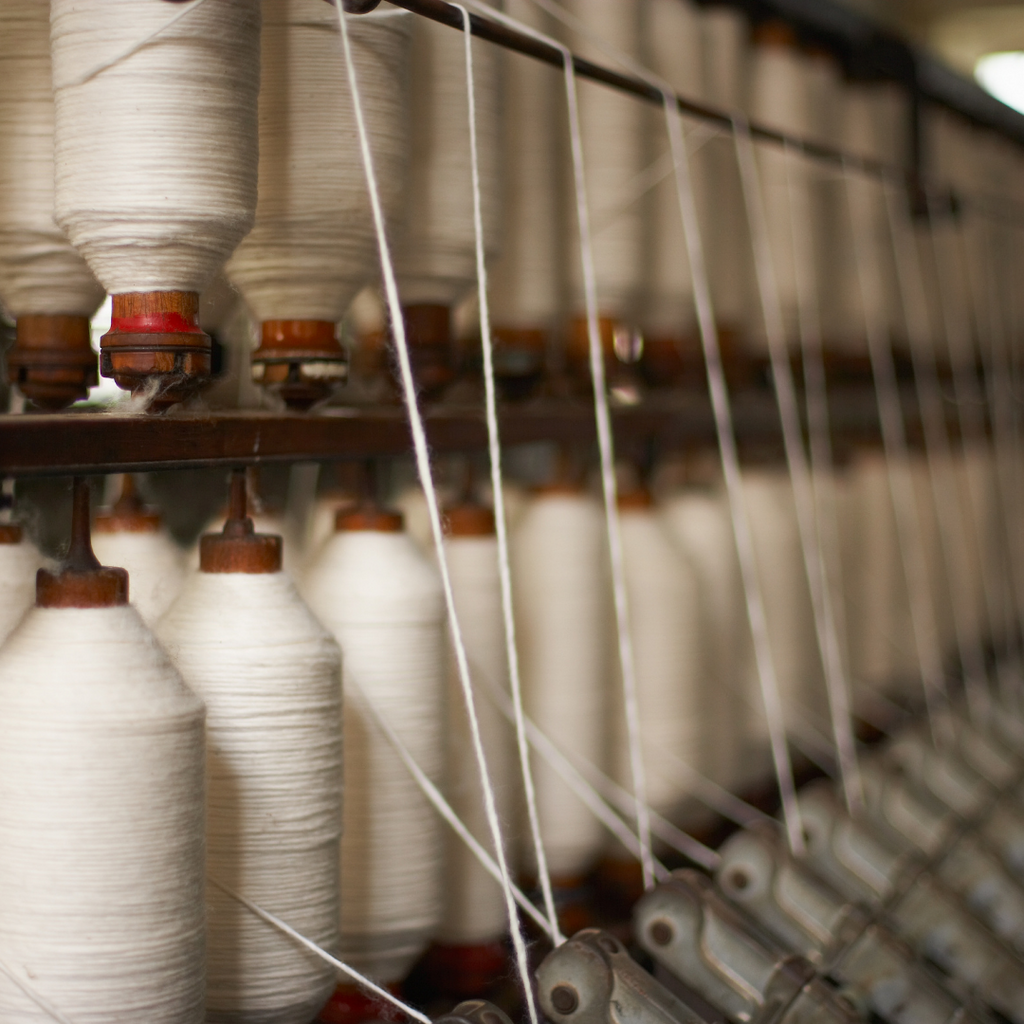Cotton Fiber to Fabric
Here in the simplest and fastest way, we will discuss how we transform fabric from cotton thread into a material we can wear. We will not be talking about making cotton fiber, starting from the cotton pod anymore, because that will be a topic for another day. By the way, we are a textile supplier, so if you need bespoke cotton fabric, you may head to our store now to order. Otherwise, continue reading to find out how materials for clothing are produced.
Step 1. Cotton yarn purchasing.
We buy the cotton and polyester yarns we use for textile knitting either from local or foreign suppliers. We do not have a cotton thread processing plant and focuses on textile knitting, which is good as we would like to support other businesses. I have featured here a photo that showcases how the cotton thread we buy looks. The item is already ready for installation on the knitting machines.
Step 2. Cotton yarn installation
The end of the yarn you may see on the photo (and notice that there are plenty of them) will then be installed or connected to a machine made for weaving and knitting.
Step 3. Fabric knitting
Do play the video we have featured here to see how fabric knitting machines work. Knitting machines like on the video works 24/7. Imagine, if you have 30 knitting machines that operate 24/7, you may expect to have a production output of 150 tonnes or 150,000 kilos of fabric per month.
Step 4. Knitted Fabric inspection
The finished product of the fabric knitting machine are rolls of fabric. The photo featured here shows an example of some finished products. Uncolored or white yarns produce undyed or white cloth that needs to be bleached or whitened. Before sending the fabric rolls for treatments, we first have them go through several inspections to ensure the materials do not have holes or running threads.
Step 5. Fabric dyeing, bleaching, and or treatments, finishing application
We send Fabrics that passed quality control to our partner dye-houses for scouring, bleaching, dyeing, and treatments that our clients require for their products. Scouring is the process of removing fabric impurities. White fabrics are bleached. Colored fabrics undergo the dyeing process. Depending on the client's request, some materials go through fabric finishes to achieve either of these unique characteristics: vintage wash for that old shirt feeling of comfort, waterproof finish, stain-free finish, wrinkle-free, starched, and etcetera.

Step 6. Quality control and pre-delivery preparation
Fabrics that are either bleached or colored and treated go back to our workshop for another quality control set. We check the materials once more for any damages. Products that pass the quality check are packed and readied for pick-up and deliveries.
We hope you liked and found value in our simplified explanation of the Fabric knitting process. Feel free to like and share this piece of information with those who need it. If you have questions or want us to write about a particular topic related to textiles and bespoke products, please let us know by leaving a comment.

